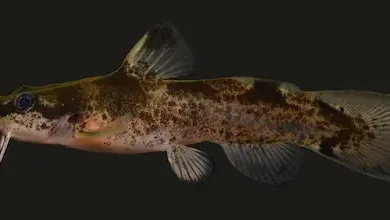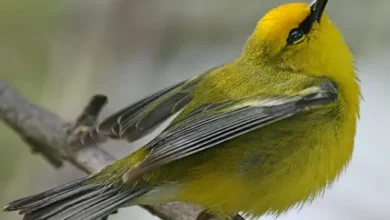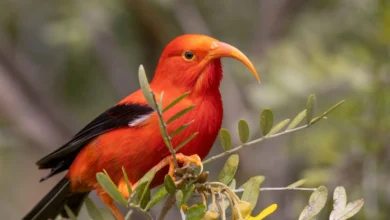Vaquita (Phocoena sinus): The World’s Most Endangered Marine Mammal
Origins, Ecology, Behavior & the Race to Save It
Introduction
Hidden in the silvery waters of Mexico’s Gulf of California lives the world’s rarest and most endangered marine mammal: the Vaquita (Phocoena sinus). With fewer than 10 individuals believed to remain, this shy, small porpoise is on the very brink of extinction.
Discovered by science only in 1958, the vaquita’s decline has been shockingly fast—largely driven by illegal gillnet fishing targeting another endangered species: the totoaba fish, prized for its swim bladder. Beyond numbers, the vaquita symbolizes how fragile marine ecosystems can become when illegal wildlife trade, habitat destruction, and insufficient enforcement converge.
This article offers a comprehensive look at the vaquita’s evolutionary origins, physical description, unique adaptations, social and reproductive behavior, habitat, diet, why it is critically endangered, and what conservationists are doing to try and save it.
Origins and Evolution
The vaquita belongs to the Phocoenidae family, a group of small toothed whales known as porpoises. Fossil evidence and genetic studies suggest porpoises diverged from other toothed whales around 15 million years ago.
Vaquita evolved as a distinct coastal species, perfectly adapted to the warm, turbid waters of the northern Gulf of California. Unlike other porpoises that inhabit open seas, vaquitas live in shallow waters less than 50 meters deep, using high-frequency echolocation suited for navigating muddy, sediment-rich habitats.
Discovered scientifically only in the mid-20th century, the vaquita was quickly recognized as unique—not just genetically, but also morphologically, with a proportionally shorter body and distinctive facial markings.
Physical Description and Adaptations
-
Size & Weight: The smallest of all cetaceans, vaquitas reach about 1.2–1.5 meters in length and weigh around 40–55 kg.
-
Appearance: Light gray body, darker gray back, pale belly, and striking dark rings around the eyes and lips, giving them a “smiling” look.
-
Fins: Short, triangular dorsal fin suited to shallow water, and small flippers adapted for maneuverability.
-
Sound: Vaquitas produce high-frequency clicks (~125–150 kHz) used for echolocation, making them nearly silent to predators and humans.
Habitat and Range
The vaquita is endemic to the northern part of the Gulf of California (also known as the Sea of Cortez) in Mexico. They inhabit shallow, turbid waters near the Colorado River Delta, areas rich in nutrients that support small fish and squid.
This highly localized range—covering only about 4,000 km²—makes vaquitas extremely vulnerable. Human impacts anywhere in this area can affect the entire population.
Social Behavior and Daily Life
Vaquitas are shy, elusive, and solitary, typically seen alone or in small groups of two to three. Unlike dolphins, they do not approach boats, making them challenging to study.
They surface briefly and quietly to breathe, often going unnoticed even when boats are nearby. Their small size and limited splash add to their mystery.
Diet and Feeding
Vaquitas are opportunistic feeders, primarily consuming:
-
Small fish (e.g., croakers, grunts, gobies)
-
Squid
-
Crustaceans
Feeding mostly near the seafloor, they use echolocation to locate prey in the Gulf’s murky waters, hunting both day and night.
Reproduction and Lifespan
Vaquitas reach sexual maturity around 3–6 years old. Females usually give birth to a single calf every two years after a gestation period of about 10–11 months.
Calves are about 70–80 cm long at birth, staying close to their mothers while nursing for several months. Estimated lifespan is around 20–21 years, though few survive to old age in the wild.
Why the Vaquita Is Near Extinction
Gillnets and Bycatch
The single greatest threat to vaquitas is entanglement in gillnets used to catch totoaba (Totoaba macdonaldi), whose swim bladders are illegally exported to Asia for traditional medicine.
Gillnets, with mesh sizes perfect for trapping totoaba, also fatally trap vaquitas, leading to drowning when they can’t surface for air.
Illegal Wildlife Trade
The high value of totoaba swim bladders has fueled organized poaching networks, making enforcement dangerous and complex.
Habitat Degradation
Upstream water diversion from the Colorado River has reduced freshwater inflows, altering the Gulf’s ecosystem.
Small Population & Genetic Risk
Fewer than 10–20 individuals remain (as of 2024 estimates). Small populations face heightened risk of disease, genetic inbreeding, and random events like storms.
Conservation Efforts and Challenges
Gillnet Bans & Enforcement
Mexico established a permanent ban on gillnets in the vaquita’s habitat, though illegal fishing persists.
International Collaboration
NGOs, scientists, and governments have worked together to monitor vaquitas, remove illegal nets, and train communities for alternative livelihoods.
Ex-situ Conservation
In 2017, the VaquitaCPR project attempted to relocate vaquitas into protected sea pens, but was suspended after stress caused fatalities.
Acoustic Monitoring & Net Removal
Scientists use acoustic detectors to track vaquita presence and guide net removal teams, which pull thousands of meters of illegal nets each year.
Community Engagement
Programs aim to help fishers switch to vaquita-safe fishing gear (like “suripera” nets), though adoption has been slow.
Current Status and Hope for the Future
The situation is dire: extinction could occur within years if illegal fishing isn’t stopped. Yet scientists remain cautiously hopeful. Vaquitas can still breed, and even a small population could recover if bycatch mortality is reduced to near zero.
The story of the vaquita is both tragic and symbolic—a stark reminder that conservation cannot wait until numbers are critically low.
The Vaquita’s Legacy
Though small and elusive, the vaquita’s fight for survival has drawn global attention to the hidden costs of illegal trade, unsustainable fishing, and inadequate enforcement.
Saving the vaquita means more than preserving a single species; it represents a commitment to protecting entire marine ecosystems, coastal communities, and the natural heritage shared by all.




